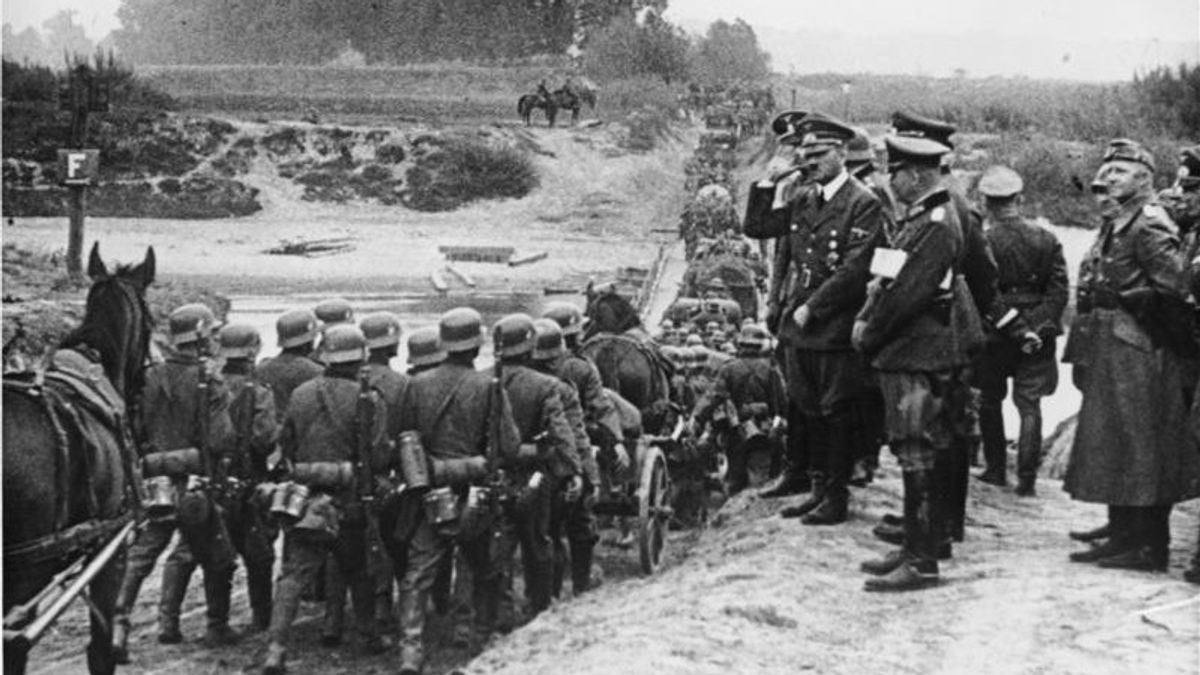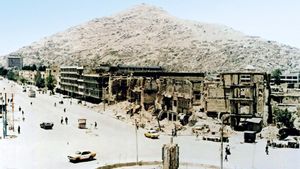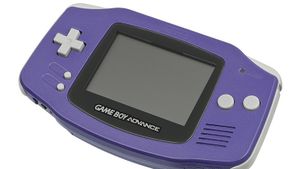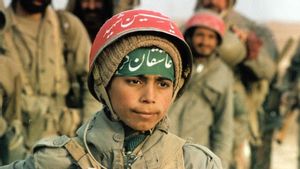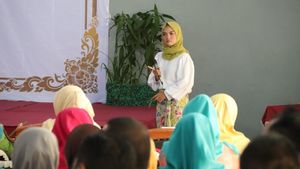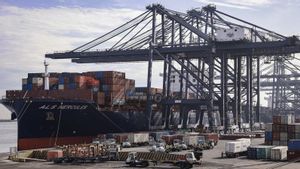JAKARTA - On September 29, 1939, Germany and the Soviet Union agreed to share control of Poland. Germany took all of the western areas, while the Soviet Union took all of the eastern areas.
This was a follow-up to the Molotov-Ribbentrop Pact, also known as the Hitler-Stalin Pact. Germany and the Soviet Union concluded a non-aggression treaty. German Foreign Minister Joachim von Ribbentrop met with representatives of the Soviet Union VM Molotov to sign the German-Soviet Union Border and Friendship Treaty.
Citing the Holocaust Encyclopedia, on April 28, 1939, Adolf Hitler announced Germany's withdrawal from the non-aggression pact signed with Poland more than five years earlier. Hitler proceeded to negotiate a non-aggression pact with the Soviet Union in August 1939. The German-Soviet Pact, which tacitly arranged for Poland to be divided between the two powers, allowed Germany to attack Poland without fear of Soviet intervention.
Germany then invaded Poland on September 1, 1939. The country invaded Poland with a force of more than 2,000 tanks supported by nearly 900 bombers and more than 400 fighters.
In all, Germany produced 60 divisions and nearly 1.5 million men in the invasion. From East Prussia and Germany to the north, and Silesia and Slovakia to the south, German units easily attacked Poland on the border and advanced to Warsaw in a massive siege attack.

Soviet Union Red Army enters Poland (Source: Wikimedia Commons)
Poland was late in mobilizing and political considerations made the Polish troops an unfavorable deployment. Polish troops also lacked modern weapons and equipment and had few armor and mobile units.
Britain and France stood with Polish border guarantees and declared war on Germany on September 3, 1939. However, Poland faced a two-front war when the Soviet Union invaded Poland from the east on September 17. The Polish government fled the country.
After heavy shelling and bombing, Warsaw surrendered to Germany on September 27, 1939. With the victory of Germany and the Soviet Union, the two countries divided Poland on September 29, 1939.
The Prime Minister of the Soviet Union, Joseph Stalin, personally drew the dividing line between Germany and the Soviet Union. Originally drawn from the Vistula River, just west of Warsaw. Stalin eventually drew a line east of Warsaw and Lublin, giving Germany control of much of Poland's most populous and industrialized area.
In return, Stalin wanted Lviv and its rich oil wells as well as Lithuania, which lay above East Prussia. Germany also had control over 22 million Poles, making them “slaves of the Greater German Empire”. While the Soviet Union has a western buffer zone.
Germany enacted a rule designed to make Poland and the "undesirable group" stating "that they (the Poles) are the conquered and we (the Germans) are the conquerors and those who resist will face the harshest punishment”.
As a result, Poles were asked not to walk on sidewalks and told to walk on ordinary streets or sewers. Poles also had to serve Germans first in shops and Poles had to take their hats off to “important figures of the German State, Party, and armed forces”. But they were not allowed to say “Heil Hitler!” because it was only used by Germans.

Soviet advantage
In addition to gaining partial control of Poland, the Soviet Union also signed the Treaty of Mutual Assistance with Estonia. The treaty gave Stalin the right to occupy Estonian naval and air bases.
A similar agreement was later also signed with Latvia. The Soviet Union's tanks eventually rolled across the borders of these countries in the name of "helping each other." What they didn't realize was that they would eventually fall into the hands of the Soviet Union for decades to come.
These “agreements” are merely derivative realizations of the Ribbentrop-Molotov Pact. This gave Stalin more border states to protect and expand the territory of the Soviet Union.
Germany then occupied the remainder of Poland when it invaded the Soviet Union in June 1941. Poland remained under German occupation until the end of January 1945.
*Read other information about TODAY's HISTORY or read other interesting articles from Putri Ainur Islam.
TODAY'S HISTORY More
SEE ALSO:
The English, Chinese, Japanese, Arabic, and French versions are automatically generated by the AI. So there may still be inaccuracies in translating, please always see Indonesian as our main language. (system supported by DigitalSiber.id)
